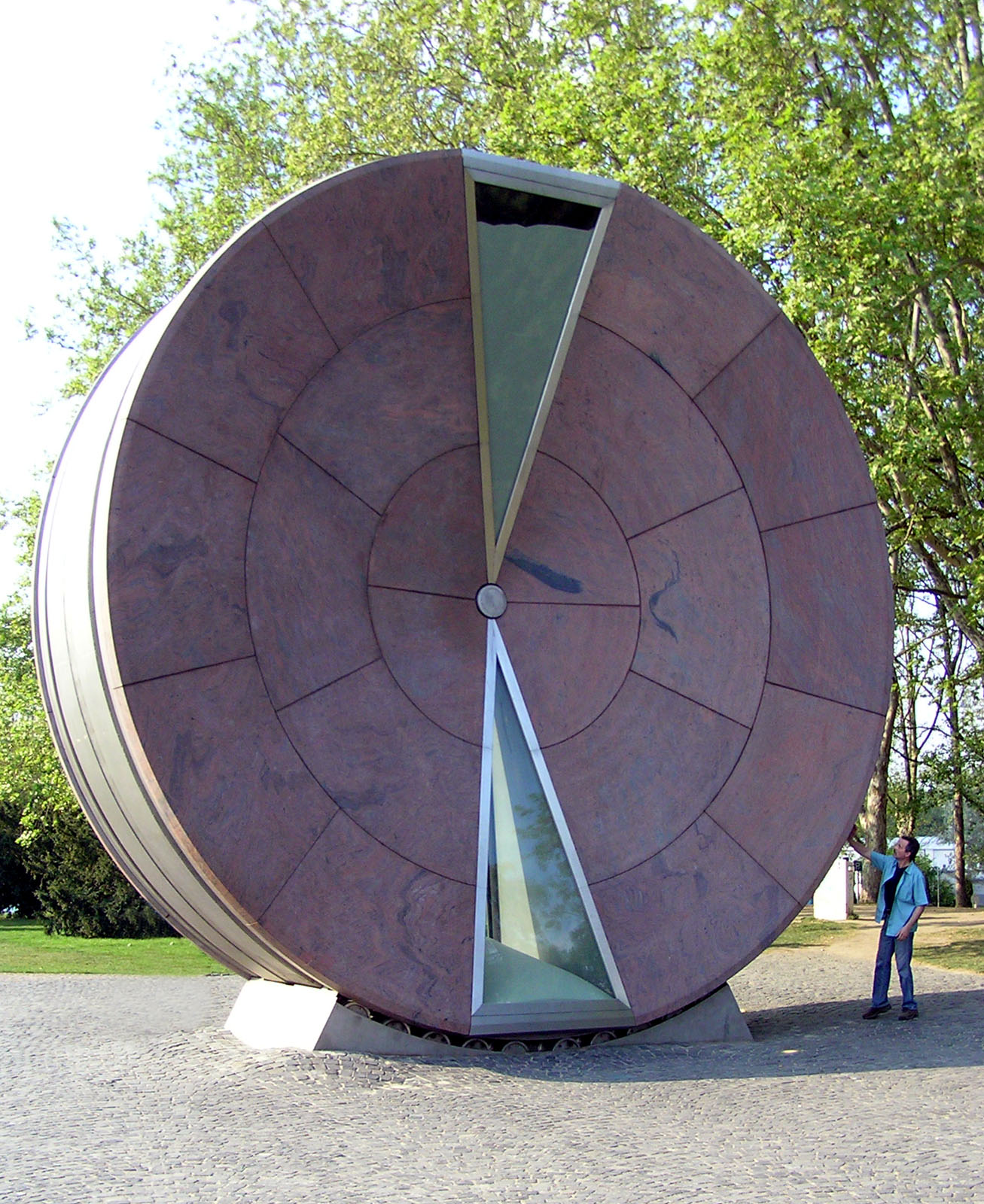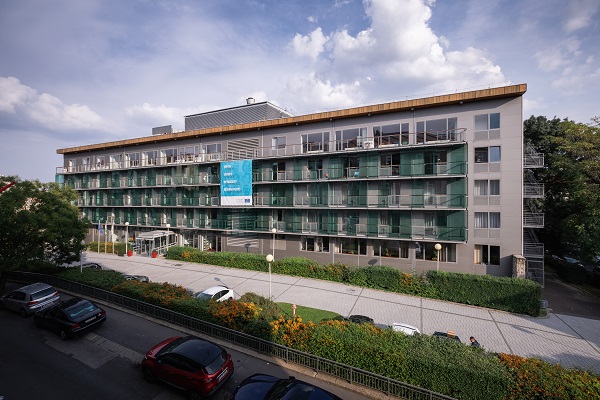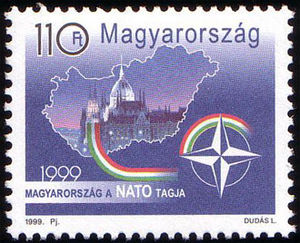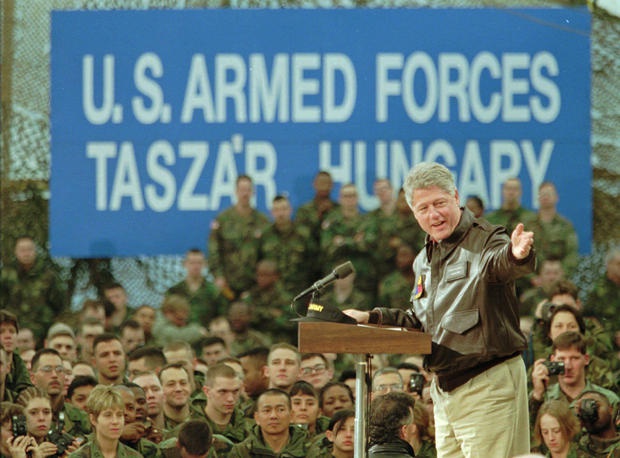
Joining the Alliances – Timewheel in Heroes Square, Budapest
Hungarian figure of the „Back to Europe together” topic
The Timewheel in Budapest’s Heroes Square is one of the world’s largest hourglasses, built to commemorate Hungary’s accession to the European Union on April 30, 2004. The structure, 8 meters in diameter and 2 meters wide, is made of red granite, stainless steel, and bulletproof glass, weighing 60 tons. Inside, fine glass granules slowly trickled through, though the flow was so slow it could only be seen up close. The Timewheel was a symbolic representation of the passage of time and Hungary’s journey toward integration into European alliances such as the EU, NATO, and the Schengen Area.
The idea for the Timewheel came from János Herner in 1982, but it took over two decades before it was realized. Initially, the concept included the Timewheel rolling along steel tracks over 64 years, symbolizing a journey through time. Due to technical and logistical challenges, this aspect of the design was never realized, but the hourglass itself became a symbol of Hungary’s historical transformation.
Since its inauguration on the night of Hungary’s EU accession, the Timewheel was intended to be reversed every New Year’s Eve. However, technical difficulties often plagued its operation, and by 2011, the hourglass had ceased to function. In recent years, it was damaged, and with the start of construction work in the area as part of the Liget project, the Timewheel was fenced off and eventually dismantled in 2021 for restoration. The future of the Timewheel remains uncertain, with plans to reinstall it at a new location after repairs.
The Timewheel reflects Hungary’s broader journey into Western alliances, symbolized not only by its EU accession but also by its membership in NATO in 1999 and its joining of the Schengen Area in 2007. The Timewheel’s location, close to where a Lenin statue once stood, represents the country’s dramatic shift from Soviet influence to becoming a part of Western democratic and economic structures.
Hungary’s accession to NATO marked a key turning point in its alignment with Western security frameworks. Székesfehérvár, the site of the NATO Multinational Division Centre, and the establishment of NATO’s first military base in former Warsaw Pact territory at Taszár Air Base illustrate Hungary’s strategic importance in Central European defense. These developments solidified Hungary’s role in maintaining regional security and highlighted its commitment to collective defense and cooperation within the NATO alliance.
Similarly, Hungary’s inclusion in the Schengen Area in 2007 was another significant step toward deeper European integration. The restoration of the Maria Valeria Bridge in Esztergom, linking Hungary and Slovakia, symbolized the removal of borders within Europe, representing Hungary’s commitment to the free movement of people and goods. The Schengen Agreement further strengthened Hungary’s economic and political ties with its neighbors and the broader European Union.
The Timewheel, though currently non-functional, serves as a reminder of Hungary’s transformation from a Soviet satellite state to an active participant in the European community. It symbolizes the passage of time, reflecting how Hungary has navigated historical challenges to join the Western alliances that now define its political, economic, and security landscape. The monument’s significance extends beyond its physical presence, serving as a metaphor for Hungary’s alignment with democratic values and international cooperation, as well as its contribution to regional stability in Central Europe.
Facts





